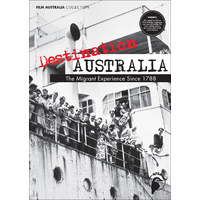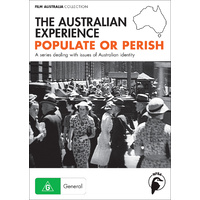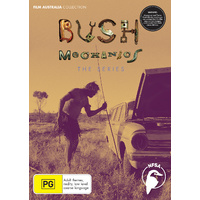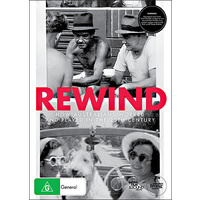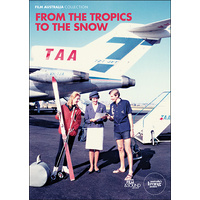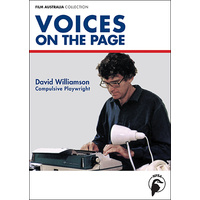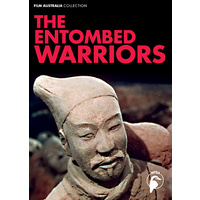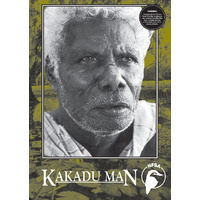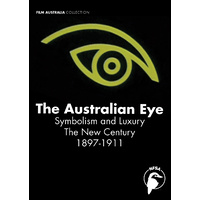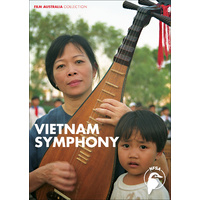1994, 3 x 55 Minutes. Classification: G.
A series of three programs dealing with issues of Australian identity.
Recalls the fear and insularity that has shaped Australia’s population policy.
Europeans declared Australia terra nullius - an empty land. This lie enabled them to take possession of land occupied for thousands of years by Aboriginal people, yet the number of whites in Australia remained small until after the Second World War.
In the post-war years, government sponsored immigration schemes brought many more Europeans to Australia. "Populate or perish" became the catch cry of those who sought to achieve their vision of a secure and booming Australia, a land which had plenty of room for everyone - provided they were white.
After nearly fifty years of continuous growth, this documentary recalls the fear and insularity which shaped Australian population policy. Today many fears remain, but contemporary anxieties find expression in movements opposed to further population increase. Population growth takes the blame for the destruction of both the environment and quality of life.
Yet there are those who celebrate a more crowded, bustling Australia, believing that growth is essential to a thriving and diverse society. They argue that the greatest threat to our natural, social and cultural landscapes is not the size or make up of our population, but the way we choose to live.
Populate or Perish explores Australia’s population debate, from Sydney and its suburbs to inland Tibooburra, from the populous Gold Coast to its near neighbour Byron Bay.
What is revealed is not simply a question of numbers, but highly contested visions of Australia’s future.
FREE Teachers' Notes - Download here
With overtime at work increasing and penalty rates disappearing, how valid is Australia’s reputation as the “land of the long weekend”?
Australia—first in the world to institute a 40-hour working week, first to say there was such a thing as a fair and reasonable wage. Conditions like these helped to win Australia its reputation as a “workers’ paradise”; the mythical “land of the long weekend”.
Now in the face of deregulation and restructuring, long-term unemployment and 24-hour trading, does the Australian future hold any weekend at all?
This film examines how, since white settlement, Australians have structured, and restructured, their time. Despite some basic inequalities, Australia was a new country trying to throw off the conditions of the Old World.
Even two world wars and severe economic depression could not deter Australians from pursuit of “the fair go”. By the 1950s most Australians lived in an ordered, protected, prosperous world of school, employment, Saturday afternoon sport and the Sunday roast.
Yet today Australia is following the global trend towards a population divided between the overworked and the underemployed. The old 9 to 5 certainties are no longer in place. People work from home via computer and shop in 24-hour supermarkets. Overtime has increased and penalty rates are disappearing.
Have Australians lost sight of the need to balance work and play, in their drive to be productive, flexible and efficient? Have we abandoned the idea of “the fair go”?
FREE Teachers' Notes - Download here
Looks at the history of Australia’s wool industry.
For a golden century, the wool industry gave Australia one of the highest living standards in the world.
Wool and the people who grew it were entwined with the national identity. Sheep adorned postage stamps and coins. Every child learnt about John Macarthur and the merino and knew that Australia rode the sheep’s back to prosperity. The character of the bushman became the template for Australian identity. The Country Party was a powerful force in Australian politics and city people admired their country cousins.
The economy rode high on wealth from primary exports. By the 1950s, wool was synonymous with the Australian way of life.
Yet barely a decade later, Australia had jumped from the sheep’s back on to the iron ore train. Along the way, the nation itself changed, became less homogeneous and more complex. Suddenly people in the bush found themselves out of step with those in dramatically changing cities.
Advertisers may still rely on farm imagery, but between city and country people there is an ever-widening gap. As the fortunes of the rural sector wane, city identification with rural Australia is fading too.
What does the future hold for farmers and their families? What does it hold for a nation that once rode the sheep's back to prosperity? And what will become of the rural symbols and legends upon which the Australian identity once depended?
FREE Teachers' Notes - Download here
A Film Australia National Interest Program. Produced with the assistance of the Australian Broadcasting Corporation. © 2011 National Film and Sound Archive of Australia.
(199201900)
Directors: Peter Butt, Sue Brooks, Susan Ardill
Year: 1994
Running Time: 165 Minutes (3 x 55 Minutes)
Classification: G
Curriculum Links: HSIE/SOSE, Australian studies, Economics, Sociology, Geography, Politics and Humanities. See individual episodes for specific curriculum links and teachers notes.
SEE ALSO
| SKU | 199201900 |
| Brand | Film Australia |



